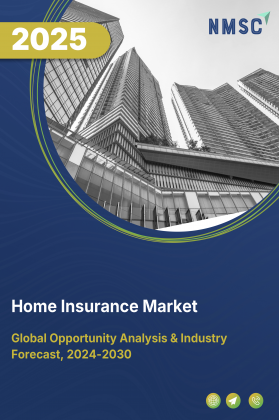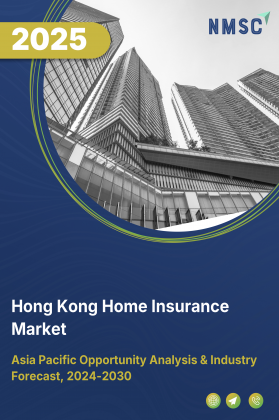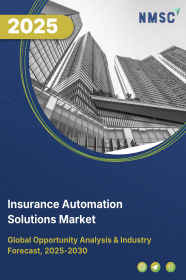
Insurance Automation Solutions Market by Business Function (Pre-Contract, Policy Administration, In-Trip Servicing, and Claims Management), by Technology (RPA / Workflow Orchestration, AI/ML, IDP, NLP & Chatbots, and Blockchain & Smart Contracts), by Deployment Model (Cloud-Native SaaS, On-Premise/Private Cloud, and Hybrid), and by End-User (Primary Carriers, MGAs & Brokers, InsurTechs & Startups, and Travel Platforms & OTAs) – Global Opportunity Analysis and Forecast, 2025–2030
Industry Overview
The global Insurance Automation Solutions Market size was valued at USD 4.30 billion in 2024, with an estimation of USD 4.6 billion in 2025 and is predicted to reach USD 6.9 billion by 2030 with a CAGR of 8.2% from 2025-2030.
The market is witnessing rapid growth driven by rising insurance penetration, digital infrastructure expansion, AI integration, and InsurTech innovation. Despite these advancements, data security, regulatory compliance, and legacy system integration remain persistent challenges.
Nonetheless, the growing adoption of AI-powered analytics, intelligent process automation, and cloud-native platforms offers strong future growth potential, particularly in emerging markets and digitally maturing insurance ecosystems.
Rising Insurance Penetration Fuelling Demand for Automation Solutions
As more individuals gain access to insurance across emerging markets, rising insurance penetration is placing growing pressure on insurers to manage high volumes of policies and claims efficiently. According to the India Brand Equity Foundation (IBEF), in 2025, India is now the fifth-largest life insurance market among emerging economies, with annual growth rates of 32–34%.
Also, according to the NAIC’s 2024 Market Share Data, life, annuity, and accident & health premiums reached $970.1 billion in the U.S. This explosive growth is mirrored across other emerging markets, where insurance inclusion is a key development.
Rising Customer Expectations Boost Demand for Speed and Personalization
Increasing customer expectations for speed, transparency, and personalized experiences are pushing insurers to adopt automation at a rapid pace. Today’s digitally savvy policyholders expect instant policy issuance, real-time claim updates, and tailored product recommendations services that are difficult to deliver through manual processes alone.
Automation technologies, such as AI-powered chatbots and machine learning algorithms, allow insurers to provide 24/7 customer support, reduce claim settlement times, and analyze customer data to deliver personalized coverage options. This not only enhances user satisfaction but also builds long-term customer loyalty in a highly competitive market.
Insurance Technology Startups Drive Automation in the Insurance Industry
The rise of InsurTech startups is becoming a key driver of automation across the insurance industry. These startups are introducing automation-first solutions such as voice-enabled interfaces, AI-driven risk analytics, digital distribution channels, and in-app micro-insurance. Their lean and agile models are setting new standards for speed, personalization, and efficiency, pressuring traditional insurers to modernize their legacy systems through automation to remain competitive.
For instance, according to the OECD’s 2025 report on Technology and Innovation in the Insurance Sector, the number of funding deals between insurers and InsurTech startups has grown significantly, from just 28 in 2014 to over 100 in 2024. This surge highlights the growing strategic focus on innovation and automation, with many insurers launching dedicated venture capital funds and incubators to accelerate digital transformation across the insurance value chain.
Security and Compliance Barriers Market Growth
One of the most pressing barriers to insurance automation is the growing challenge of ensuring data security and regulatory compliance in increasingly digital and interconnected systems. As the insurance industry adopts technologies such as AI, RPA, cloud platforms, and Digital Public Infrastructure (DPI), the volume of sensitive personal and financial data being processed has expanded significantly. This heightened data exposure makes insurers attractive targets for cyberattacks and places them under strict global data protection and privacy regulations.
For instance, the rising tide of cybercrime, as highlighted in the FBI’s 2024 Internet Crime Report, has direct implications for the Insurance Automation Solution market. With over 8,59,000 complaints and losses exceeding $16 billion, up 33% from 2023 in the U.S., the urgency for secure, compliant, and resilient digital systems is more critical than ever.
This surge in cyber incidents is compelling insurers to adopt automated underwriting, real-time risk modeling, and incident response systems to both protect their operations and remain compliant, underscoring security and compliance as major barriers for automation across the insurance sector.
Integration of AI-Powered Automation Solution Presents Future Growth Opportunity
The integration of Artificial Intelligence (AI) into underwriting and risk assessment is emerging as a key opportunity for the insurance automation solutions market expansion. By enabling real-time analysis of customer behavior, environmental factors, and historical data, AI allows insurers to accurately assess risk, dynamically price policies, and automate fraud detection and claims decisions.
For instance, according to EIOPA’s July 2024 Impact Assessment, 50% of non-life insurers and 24% of life insurers in Europe have already implemented AI technologies. Moreover, an additional 30-40% plan to adopt AI within the next three years. This accelerating adoption highlights the industry's recognition of AI as a strategic tool for automation, compliance, and operational efficiency, solidifying its role as a foundational driver of insurance automation at scale.
Market Segmentations and Scope of the Study
The insurance automation solutions market report is segmented by business function, technology, deployment model, buyer type, and region. Key business functions include pre-contract automation (quoting, e-signature), policy administration (billing, renewals), in-trip servicing (chatbots, digital vault), and claims management (intake, adjudication, fraud detection). Technologies driving the market include RPA, AI/ML, intelligent document processing, NLP, and blockchain. Deployment models cover cloud-native SaaS, on-premise, and hybrid setups. Buyers include insurers, MGAs, brokers, InsurTechs, and travel platforms. Regionally, the market spans North America, Europe, Asia-Pacific, and the Rest of the World.
Geographical Analysis
The growing integration of AI-powered tools by North American insurers is significantly accelerating the adoption of insurance automation solutions. Insurers are leveraging AI across key functions such as underwriting, claims processing, dynamic pricing, and customer service to enhance efficiency and accuracy.
For instance, in the NAIC’s May 2025 Health AI/ML Survey Report, 84% of U.S. health insurers are already applying AI/ML technologies in areas like fraud detection, prior authorization, utilization management, and customer engagement. This widespread deployment underscores a major shift toward automation-led operations, positioning AI as a key enabler and growth driver for the insurance automation market share across North America.
The EU Digital Identity Regulation, which became effective in May 2024, is helping accelerate insurance automation across Europe. Under this regulation, every EU country must provide citizens with a secure digital identity wallet by 2026. These wallets will allow users to verify their identity and share official documents such as proof of age, residency, or driving license, directly with insurers and other service providers through a mobile app.
For insurance companies, this enables faster and more secure onboarding, e-KYC processes, automated claims validation, and digital policy issuance. It also helps reduce fraud and improves customer experience, making the insurance process more efficient and fully digital.
The rapid rise of telemedicine and digital health platforms in Asia-Pacific is emerging as a powerful driver of the insurance automation solutions market growth. As virtual healthcare becomes more accessible through remote consultations, health monitoring apps, and online medical services, insurers are increasingly embedding these technologies into automated workflows, enabling real-time claims processing, dynamic underwriting, and preventive wellness programs.
For instance, according to the WHO South-East Asia Office (January 2025), telehealth is significantly improving healthcare access, efficiency, and preventive outcomes, especially in underserved areas. This shift is enabling insurers to automate and personalize coverage based on digital health insights, paving the way for more scalable, efficient, and inclusive insurance systems across the region.
In the Rest of the World (RoW), the rapid expansion of mobile connectivity and digital infrastructure is creating fertile ground for the adoption of insurance automation. Countries across Africa, Latin America, and Southeast Asia are experiencing a surge in mobile phone usage, allowing insurers to reach remote and underserved populations through digital channels.
Automation tools are being increasingly deployed to streamline customer onboarding, process claims faster, and offer personalized products through mobile apps. Governments and private stakeholders are also investing in digital identification systems and financial inclusion programs, which are further supporting the growth of automated insurance platforms. This technological leap is enabling insurers in RoW to overcome traditional distribution challenges, reduce administrative costs, and deliver accessible, affordable insurance products to a broader segment of the population.
Strategic Innovations Adopted by Key Players
Key players in the insurance automation solutions industry are focusing on AI-driven innovations, platform enhancements, and collaborative partnerships to advance automation across underwriting, claims, and fraud detection.
-
In June 2025, IBM launched an AI Accelerator Hub in New York City, aimed at co-develop generative AI applications with clients. For the insurance sector, this initiative enabled insurers to rapidly prototype and deploy AI-driven automation, such as underwriting bots, policy servicing chat agents, and claims triage assistants, thereby enhancing speed and scalability in core insurance workflows.
-
In June 2025, Oracle partnered with xAI’s Grok models to integrate its OCI Generative AI platform. For the insurance sector, this empowered providers with advanced language understanding and multimodal AI, allowing more sophisticated virtual assistants, automated document classification, and deeper claims analysis with enterprise-grade security and scale.
-
In June 2025, Appian released Connected Claims 2.0, an AI-driven solution for P&C insurers. It combined intelligent document processing, fraud detection, and contextual automation to streamline the full claims lifecycle, reducing manual intervention, increasing adjuster productivity, and speeding up settlement time.
-
Between May and June 2025, UiPath launched Maestro, its Agentic Automation Platform. For insurers, this facilitated seamless orchestration between AI bots and human agents across the policy and claims lifecycle, automating repetitive tasks like form processing, fraud checks, and notification flows, while keeping humans in the loop for complex decisions.
-
In April, 2025, Shift Technology launched the Insurance Data Network (IDN), a cross-carrier data-sharing platform designed to automate and strengthen fraud detection. By enabling insurers to securely share anonymized claims data, IDN leverages AI to uncover fraud patterns across the industry, enhancing automated claims validation and reducing manual investigations in property and auto insurance.
Key Benefits
-
The report provides quantitative analysis and estimations of the industry from 2025 to 2030, which assists in identifying the prevailing insurance automation solutions market opportunities.
-
The study comprises a deep-dive analysis of the current and future insurance automation solutions market trends to depict prevalent investment pockets in the sector.
-
Information related to key drivers, restraints, and opportunities and their impact on the market is provided in the report.
-
Competitive analysis of the key players, along with their market share is provided in the report.
-
SWOT analysis and Porters Five Forces model is elaborated in the study.
-
Value chain analysis in the market study provides a clear picture of roles of stakeholders.
Insurance Automation Solutions Market Segments
By Business Function
-
PreContract
-
Automated Quoting & Risk Scoring
-
Instant Policy Issuance & ESign
-
-
Policy Administration
-
Endorsements & Renewals
-
Billing & Payments Processing
-
-
InTrip Servicing
-
Proactive Notifications & Chatbots
-
Document Capture & Digital Vault
-
-
Claims Management
-
Claims Intake & Triage
-
Adjudication & Payment Disbursement
-
Fraud Analytics & Investigation
-
By Technology
-
RPA / Workflow Orchestration
-
AI/ML
-
Intelligent Document Processing (IDP / OCR)
-
NLP & Chatbots
-
Blockchain & Smart Contracts
By Deployment Model
-
CloudNative SaaS
-
OnPremise / Private Cloud
-
Hybrid
By End User / Buyer
-
Primary Carriers
-
MGAs & Brokers
-
InsurTech & Startups
-
Travel Platforms & OTAs
By Region
-
North America
-
The U.S.
-
Canada
-
Mexico
-
-
Europe
-
The U.K.
-
Germany
-
France
-
Italy
-
Spain
-
Denmark
-
Netherlands
-
Finland
-
Sweden
-
Norway
-
Russia
-
Rest of Europe
-
-
Asia-Pacific
-
China
-
Japan
-
India
-
South Korea
-
Australia
-
Indonesia
-
Singapore
-
Taiwan
-
Thailand
-
Rest of Asia-Pacific
-
-
Rest of the World (RoW)
-
Latin America
-
Middle East
-
Africa
-
Key Players
-
IBM
-
Oracle
-
Microsoft (Power Automate)
-
Guidewire Software
-
EIS Group
-
Majesco
-
Appian Corporation
-
UiPath
-
Automation Anywhere, Inc.
-
Insurity
-
Socotra
-
Bolttech
-
CoverGo
-
Applied Systems
-
Duck Creek Technologies
-
Shift Technology
-
EXL Services
-
Keylane
REPORT SCOPE AND SEGMENTATION:
|
Parameters |
Details |
|
Market Size in 2025 |
USD 4.6 billion |
|
Revenue Forecast in 2030 |
USD 6.9 billion |
|
Growth Rate |
CAGR of 8.2% 2025 to 2030 |
|
Analysis Period |
2024–2030 |
|
Base Year Considered |
2024 |
|
Forecast Period |
2025–2030 |
|
Market Size Estimation |
Billion (USD) |
|
Growth Factors |
|
|
Countries Covered |
28 |
|
Companies Profiled |
15 |
|
Market Share |
Available for 10 companies |
|
Customization Scope |
Free customization (equivalent to up to 80 working hours of analysts) after purchase. Addition or alteration to country, regional, and segment scope. |
|
Pricing and Purchase Options |
Avail customized purchase options to meet your exact research needs. |


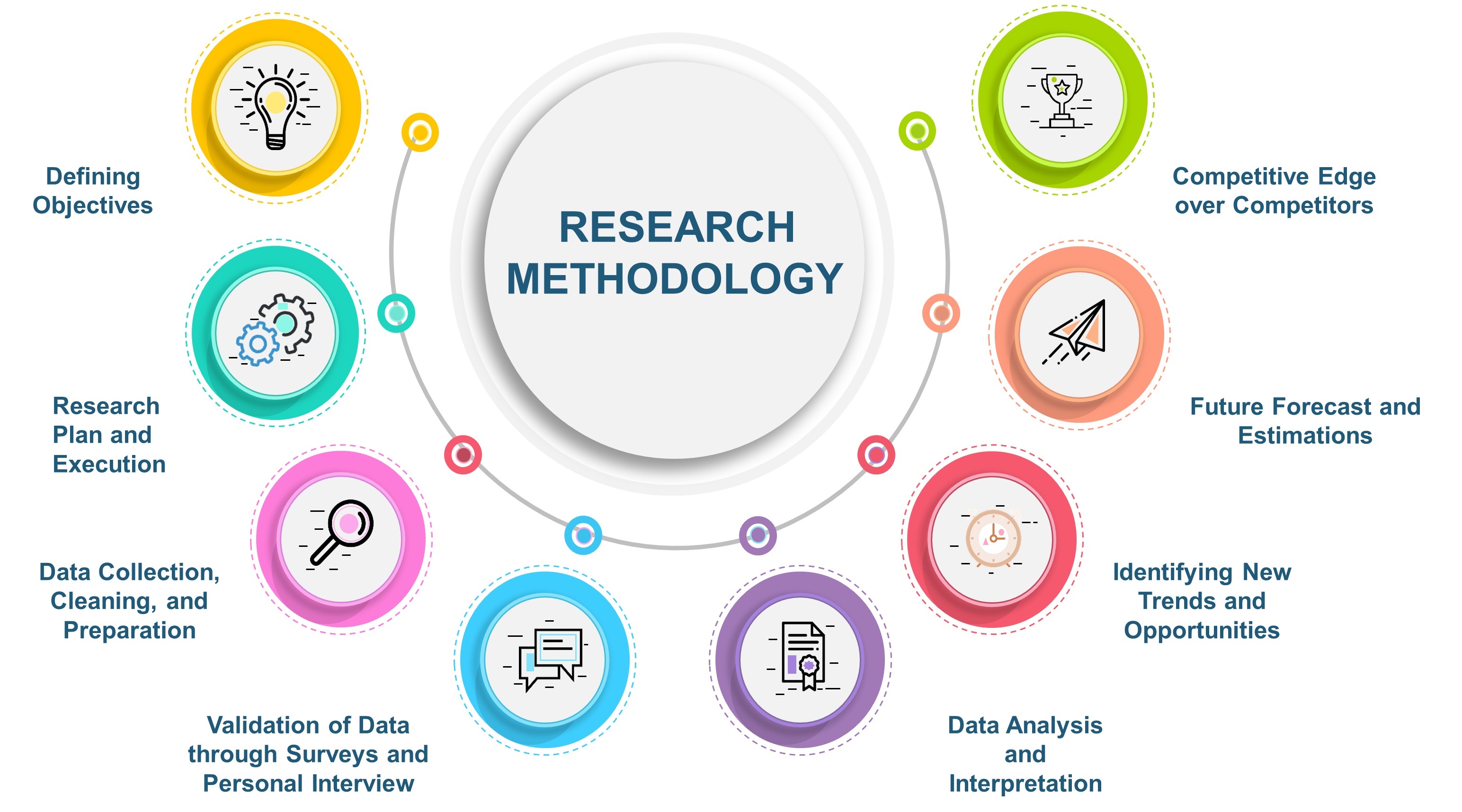
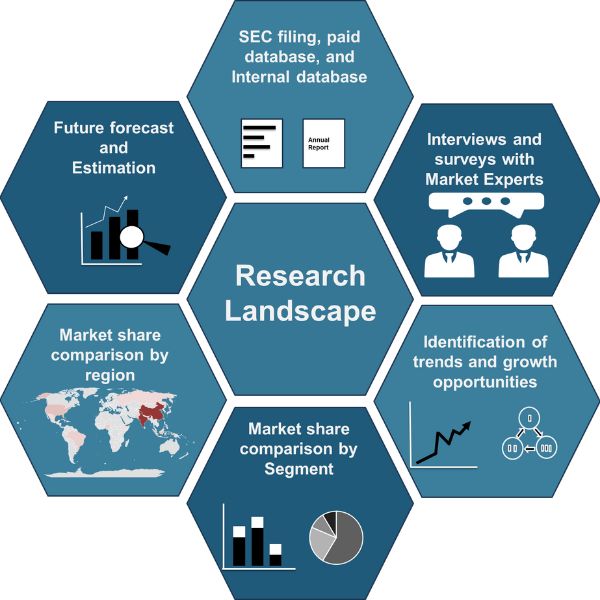
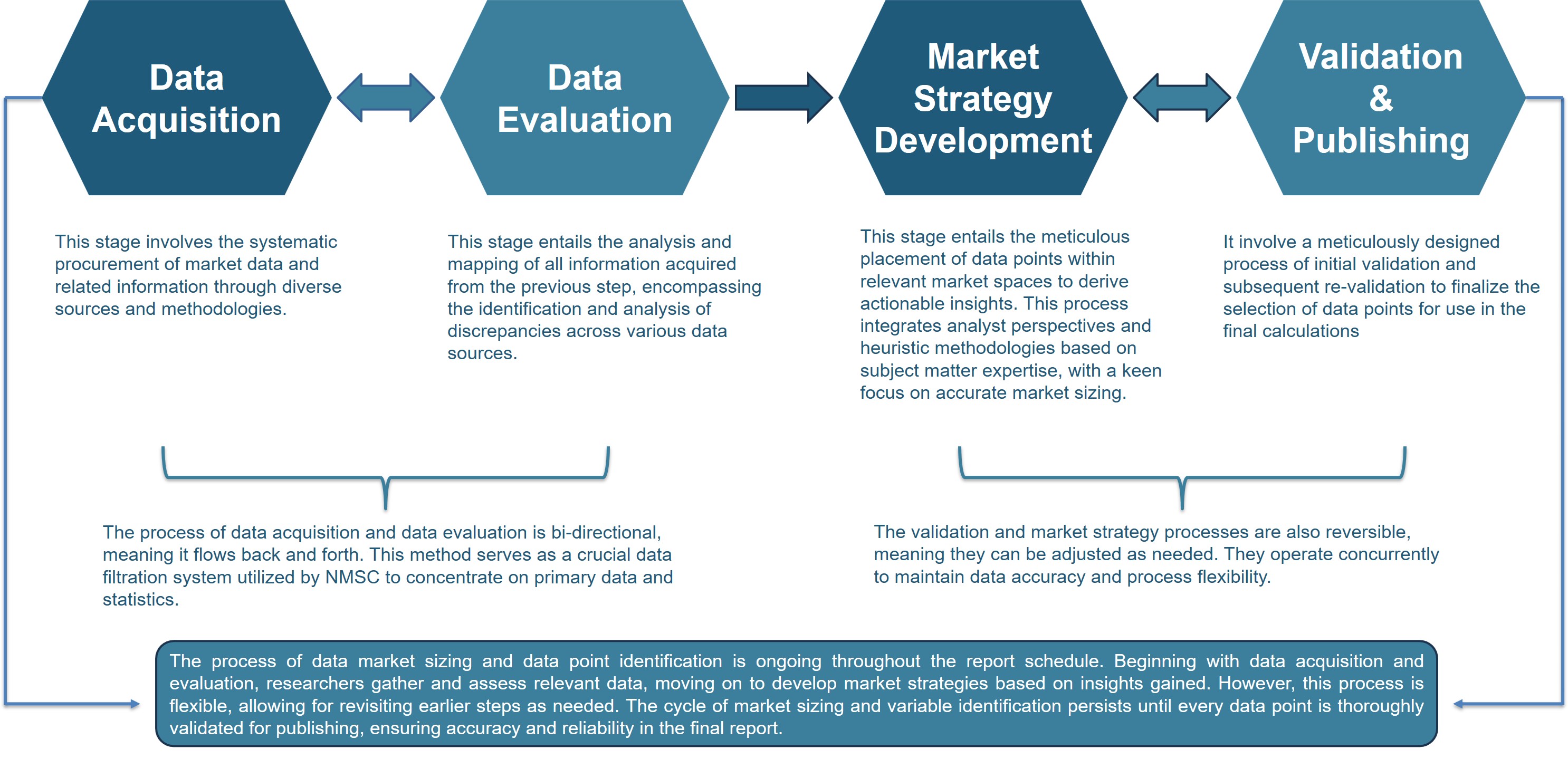
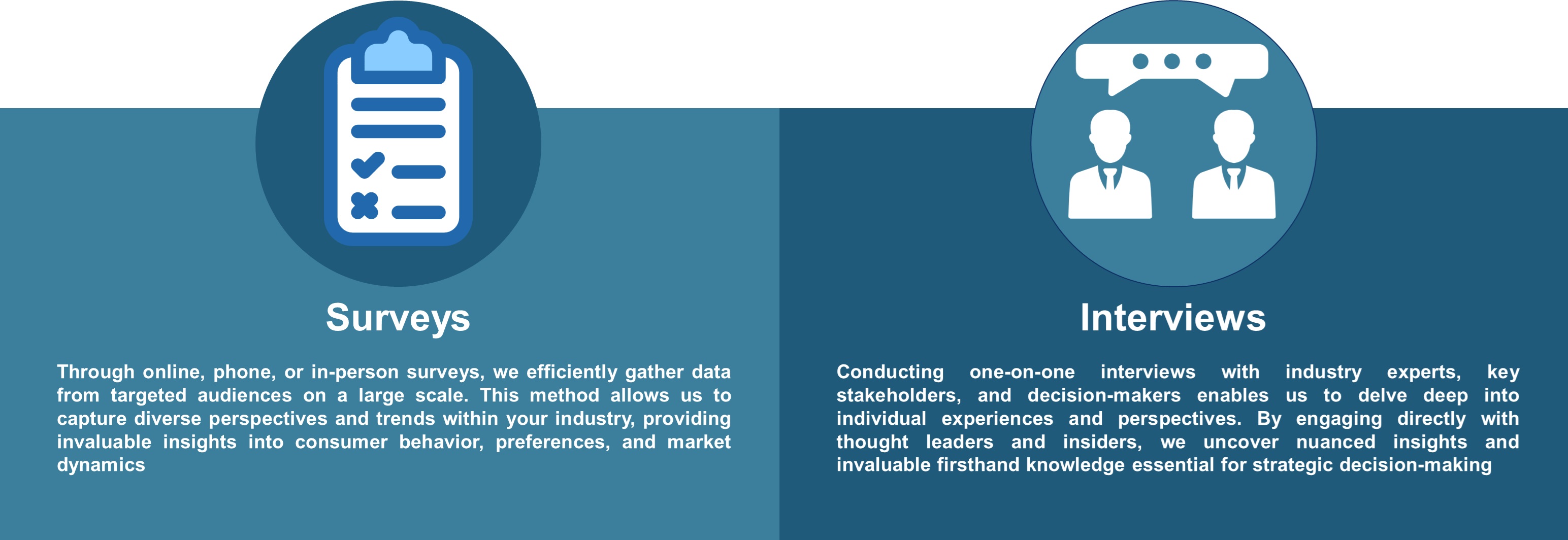



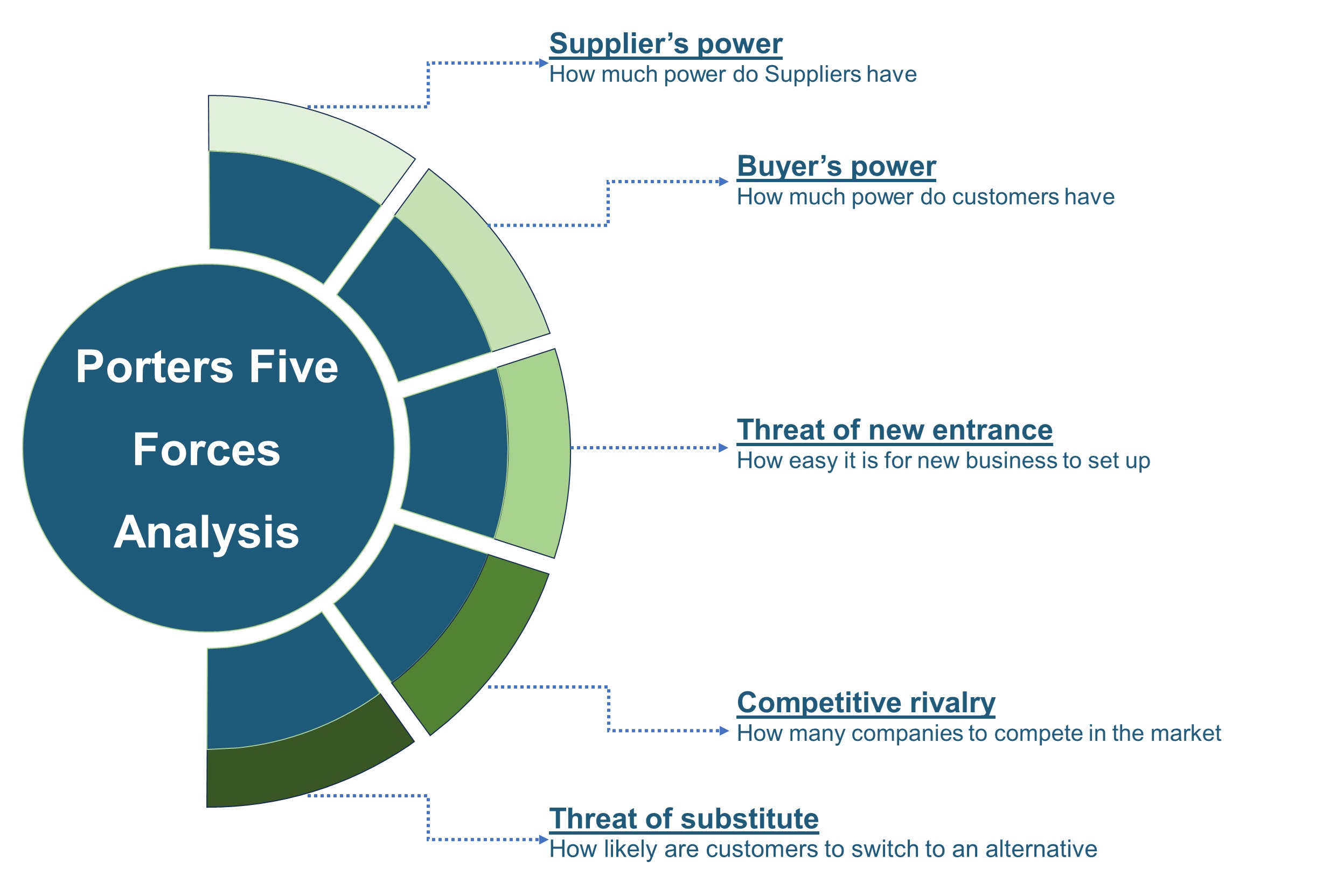







 Speak to Our Analyst
Speak to Our Analyst



